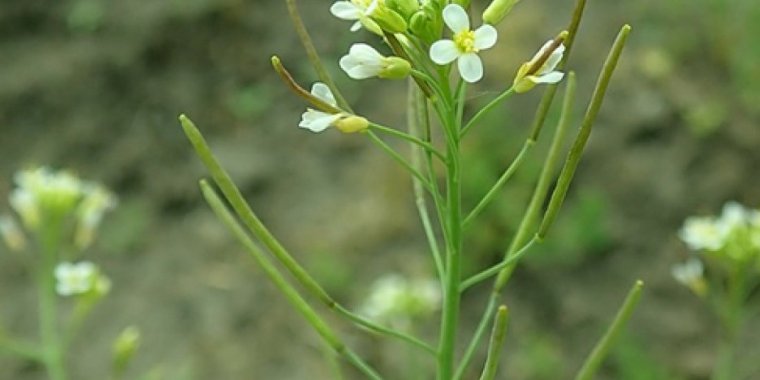| News / Science News |
Altered gene helps plants absorb more carbon dioxide, produce more useful compounds
Every day, plants around the world perform an invisible miracle. They take carbon dioxide from the air and, with the help of sunlight, turn it into countless chemicals essential to both plants and humans.

A genetic change caused Arabidopsis plants to absorb 30% more carbon dioxide than normal. Photo: Wikimedia
Some of these chemicals, known as aromatic compounds, are the starting material for a wealth of useful medications, such as aspirin and morphine. Yet many of these chemicals come from fossil fuels, because it's hard to get plants to make enough to harvest economically.
Others are essential human nutrients and can only be obtained through food, since our bodies are unable to make them.
In new work, scientists at the University of Wisconsin-Madison identified a way to release the brakes on plants' production of aromatic amino acids by changing, or mutating, one set of genes.
The genetic change also caused the plants to absorb 30% more carbon dioxide than normal, without any ill effect on the plants.
"This discovery presents opportunities to develop plant technologies that would address global issues in multiple ways, such as producing useful chemical compounds while reducing atmospheric carbon dioxide," says David Rockcliffe, a program director in NSF's Division of Molecular and Cellular Biosciences.
If scientists could add a trait like this to crops or drug-producing plants, it could help them produce more chemicals naturally while reducing greenhouse gases in the atmosphere.
"We've long been interested in this aromatic amino acid pathway because it's one of the major plant pathways that transforms carbon fixed by photosynthesis into medicines, food, fuels, and materials," says Hiroshi Maeda, a UW-Madison botanist who led the new research.
"Now for the first time, we've discovered how to regulate the key control knob plants use to turn up production of this pathway."
Normally, plants tightly control the production of aromatic amino acids by building in natural brakes to the process. When plants have produced enough amino acids, the whole system grinds to a halt.
The mutated plants Maeda's team discovered using the model plant Arabidopsis have much less sensitive brakes thanks to mutations in a gene called DHS, which starts the production of aromatic amino acids.
The upshot is the plant doesn't know when to stop and keeps churning out these compounds.
The scientists were surprised to discover that the plants put photosynthesis into overdrive, taking in significantly more carbon dioxide to fuel this new production boom. (U.S. National Science Foundation)
YOU MAY ALSO LIKE





